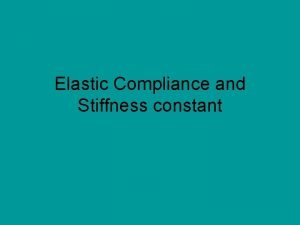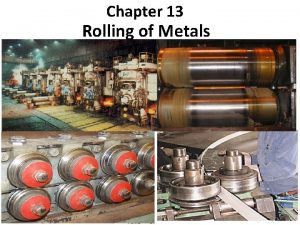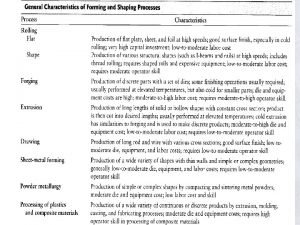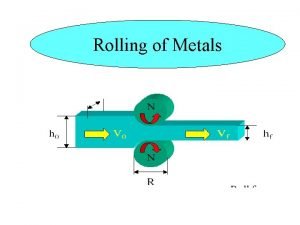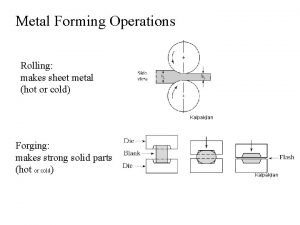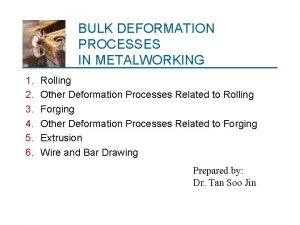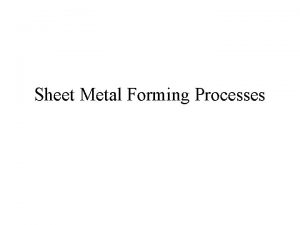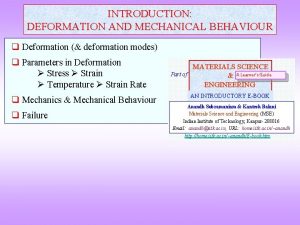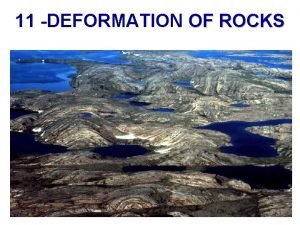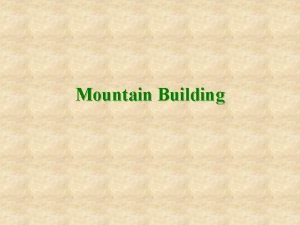ROLLING Rolling is a deformation process in which








- Slides: 8

ROLLING Rolling is a deformation process in which the thickness of the work is reduced by compressive forces exerted by two opposing rolls

ROLLED STEEL PRODUCTS

FLAT ROLLING In flat rolling, the work is squeezed between two rolls so that its thickness is reduced by an amount called the draft: where d = draft, mm; to = starting thickness, mm; and tf = final thickness, mm. Draft is sometimes expressed as a fraction of the starting stock thickness, called the reduction: where r = reduction.

Conservation of matter is preserved, so the volume of metal exiting the rolls equals the volume entering where wo and wf are the before and after work widths, mm; and Lo and Lf are the before and after work lengths, mm Similarly, before and after volume rates of material flow must be the same, so the before and after velocities can be related: where vo and vf are the entering and exiting velocities of the work.

The amount of slip between the rolls and the work can be measured by means of the forward slip, a term used in rolling that is defined: where s = forward slip; vf = final (exiting) work velocity, m/s; and vr = roll speed, m/s. There is a limit to the maximum possible draft that can be accomplished in flat rolling with a given coefficient of friction, defined by: where dmax = maximum draft, mm; μ = coefficient of friction; and R = roll radius, mm.

Rolling force can be calculated based on the average flow stress experienced by the work material in the roll gap Where = average flow stress, MPa; and the product (w L) is the roll-work contact area, mm 2 Contact length L as can be approximated by The torque in rolling for each roll is


ROLLING MILLS

